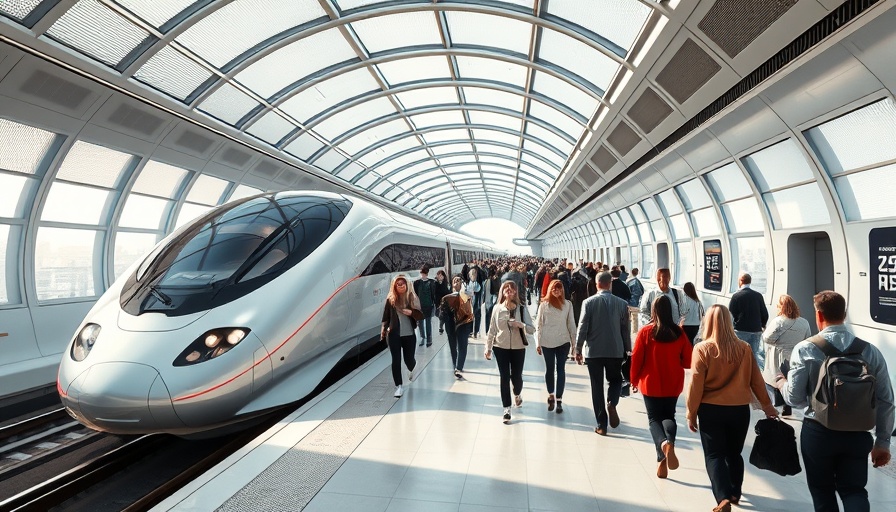
The Future of California's High-Speed Rail: A Distant Dream?
In a significant blow to California’s ambitious high-speed rail project, President Trump’s administration has officially pulled over $175 million in federal funding, raising numerous concerns about the viability of this long-term transportation initiative. Originally approved in 2008, the project aimed to connect San Francisco and Los Angeles through a state-of-the-art rail system designed to transport passengers in under three hours. Despite its noble intentions, the high-speed rail has faced mounting hurdles, including spiraling costs and pervasive delays.
Understanding the Funding Cuts: What’s at Stake?
The decision to withdraw funding has been justified by the Federal Railroad Administration (FRA), which criticized the project for its perceived lack of progress and further labeled it a “failed experiment.” The slashed funds include commitments towards crucial projects such as the Le Grand Overcrossing Project and the Southern San Jose Grade Separations. These reductions come on the heels of a $4 billion funding cut earlier this year, emphasizing a troubling trend that many fear could jeopardize California's ability to complete an essential infrastructure project.
Public Reaction: What Do Bakersfield Residents Think?
For many in Bakersfield, a city that stands to benefit significantly from improved transportation links to major urban centers, this decision is alarming. Community members express frustration—not just at the federal government’s actions but towards the prolonged delays that have characterized the project since its inception. Local residents question if the plan, once met with enthusiasm, may never materialize.
The Politics Behind the Cuts: Analyzing the National Strategy
Beyond the project’s technical aspects, the funding cuts are steeped in political motivations. Trump's administration has been known to prioritize structures and funding that fit their vision of America’s infrastructure. Furthermore, critics of the California high-speed rail project often cite fiscal prudence, framing their opposition as a defense of taxpayer interests. Yet, supporters argue that investing in rail infrastructure could provide substantial long-term economic benefits, such as job creation and increased tourism.
What Lies Ahead for the High-Speed Rail Project?
While the immediate future appears bleak, analysts predict that advocates for the project will not remain silent. The California High-Speed Rail Authority has asserted its determination to push forward, claiming that the state has provided the majority of funding for the project. As the political landscape continues to evolve, many are left wondering how these developments might influence future funding opportunities. Will federal priorities shift with changing administrations? And can California's dream of a high-speed rail network be resurrected?
The Bigger Picture: Infrastructure and Budget Allocations
This situation poses a larger question about infrastructure development in the United States. As cities expand and populations grow, the need for efficient transport systems becomes ever more critical. Will federal funding be aligned more closely with political agendas than with practical needs? Herein lies a conflict of interest: how do states secure necessary support from a federal level that may not share their priorities?
What You Can Do: Stay Informed and Engaged
As the situation progresses, it’s essential for citizens, especially those in Bakersfield, to remain informed about these developments. Engaging with local government representatives and voicing opinions can directly influence future infrastructure policies. It’s a call to action for residents to advocate for transportation solutions that enhance connection and vitality in their community.
In conclusion, while the cutting of $175 million presents considerable setbacks to California’s high-speed rail project, community members and advocates alike remain unwavering. They continue to fight for a transport solution that promises not just efficient travel between two major cities but economic growth for all of California.
 Add Row
Add Row  Add
Add 



Write A Comment